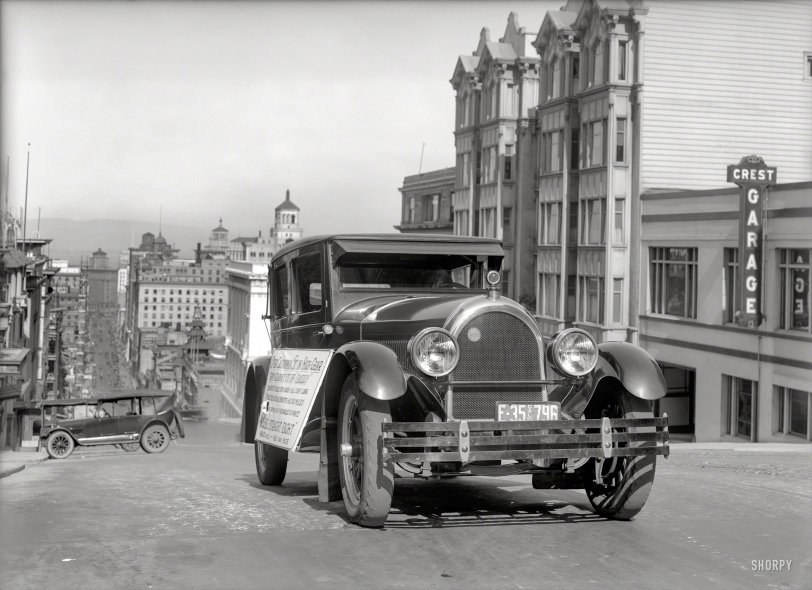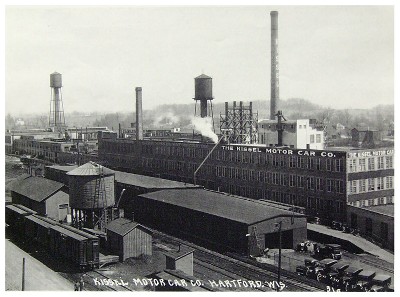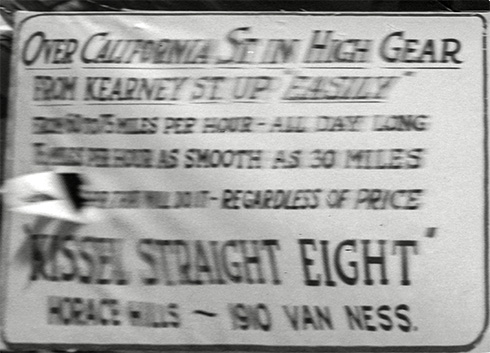


Framed or unframed, desk size to sofa size, printed by us in Arizona and Alabama since 2007. Explore now.
Shorpy is funded by you. Patreon contributors get an ad-free experience.
Learn more.

- Details, Details
- What's that building to the left of the tower?
- Coal Barges
- Bromo-Seltzer
- Inner harbor
- The Basin
- What a headache!
- Giant stepladder?
- Baldwin 62303
- Baldwin VO-1000
- Cold
- No expense spared
- Tough Guys
- Lost in Toyland
- And without gloves
- If I were a blindfolded time traveler
- Smoke Consumer Also Cooks
- Oh that stove!
- Possibly still there?
- What?!?
- $100 Reward
- Freeze Frame
- Texas Flyer wanted
- Just a Year Too Soon
- WWII -- Replacing men with women at the railroad crossing.
- Yes, Icing
- You kids drive me nuts!
- NOT An Easy Job
- I wonder
- Just add window boxes
Print Emporium
High Gear: 1926

OVER CALIFORNIA ST. IN HIGH GEAR
FROM KEARNEY ST. UP "EASILY"
FROM 60 TO 75 MILES PER HOUR -- ALL DAY LONG
75 MILES PER HOUR AS SMOOTH AS 30 MILES
ONLY CAR THAT WILL DO IT -- REGARDLESS OF PRICE
"KISSEL STRAIGHT EIGHT"
HORACE HILLS -- 1910 VAN NESS
San Francisco, 1926. "Kissel Straight Eight on California Street." Around 150 Kissels are said to survive, out of the 35,000 manufactured before the company expired in 1930. 5x7 inch glass negative by Christopher Helin. View full size.
I walk down that street every day to work, and back.
Been doing that for 22 years. (And back in 1993 I almost rented an apartment that is in this shot :)
Great to see this pic. If you have taken a ride on the California/Van Ness cable car, you know where this is. This is at the intersection of Powell and California, where the cable cars cross. One line going to the the wharf, the other from the Embarcadero to Van Ness (and the old "auto row").
Yes, many of the buildings are still there, in 2014.
Bonus Comment: Even today cars going up California have a daunting task, especially for those cars with manual transmissions. I smell burning clutches all the time.
And for older cars with cooling issues, getting stuck in traffic on the incline causes cars to overheat, blow a hose, or stall.
Back then any car that could roar up California St, that was impressive.
Snubbed
Note the shock absorbers, a.k.a. "snubbers." They are spring-loaded fabric straps attached to the front axle and work up and down from the disc above like a large tape measure.
Not so different today
In 1925, the Crest Garage was at 875 California Street. The current Google Street View shows a surprising number of surviving buildings, considering the amount of demolition and construction in San Francisco over the last 89 years:
Old school driving
If this big eight was anything like the Ford fours, you could retard the spark advance on the control in the center of the steering wheel. This would let you chug up the hill in high gear instead of downshifting, which was really hard before synchros. I learned this on country roads in my father-in-law's 1928 Model A.
Like Solo Said
Those long-stroke straight-eights had gobs of torque. My dad used to put his aunt's '38 Buick in first gear and get out and walk alongside while it idled along.
Bobble Eagle
In 1929, Kissels had an eagle hood ornament with spring-loaded wings. As the car rode over bumps, the wings would flap up and down. Pop found one somewhere and put it on his '54 Ford.
Kissel automobiles
were top end and very reliable cars by most accounts. The well regarded Wisconsin Auto Museum of Hartford, Wisconsin (home of the old Kissel plant) features a number and variety of Kissel vehicles. The convergence of a number of issues in the late 20s, including a hostile takeover attempt, led to the company’s demise. Two sons of the company founder were able to regain control of the plant in 1934, and commenced making Waterwitch brand outboard motors for Sears and Roebuck. The building still stands, and has had a number of occupants over the years.
By one 1929 newspaper account there are several Kissels in the belly of the Grand Trunk Railway rail car ferry Milwaukee, now resting on the bottom of Lake Michigan after succumbing to a ferocious storm in October of 1929. Online pictures of the vessel interior reveal at least one car, but they lack the clarity necessary to identify it.

Misconception
The tread on a tire move water on the road away to the side. The more rubber or compound touching the road surface the better the"sick". Hence racing slicks. Just look at any funny car! Unil recently all racing cars had them. They were replaced to slow the cars down, they always used grooved tire as rain tires for the above reason.
No Tread On Me
The question is whether this car is safe to drive at 70 MPH on those tires. Or whether those tires will make it back down the hill.
Torque Monster
Those long-stroke, low-rev engines were famous for permitting the driver to select high gear very early, then smoothly but glacially accelerate to whatever speed that conditions, the mechanism, and the law permitted. The ability to do a wheelie or lay rubber was far less valued, if even conceived of by the average motorist, than the opportunity to minimize negotiating one's way through the unsynchronized gearbox more than was absolutely necessary.
Up "Easily"
My guess for the missing words is "only car":

























On Shorpy:
Today’s Top 5